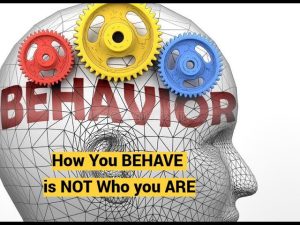10 Signs: YOU are Broken, Damaged, Scarred
1. Introduction to Relationship Difficulties and Brokenness
- People often feel “not relationship material” due to past relationship difficulties, but no relationship is wasted; all serve as learning experiences. Everyone seeks an optimal match but many fail or compromise [00:00-02:00].
- Two types of damaged people: those broken due to mental health disorders and those broken from abuse or mistreatment; both share similar clinical features [02:00-03:00].
- Distinction between transient and permanent brokenness; clinically indistinguishable [03:00-04:00].
2. Trust and Hypervigilance
- Trust is a key differentiator between healthy and damaged people. Persistent suspicion, paranoia, and hypervigilance reflect hyperarousal caused by past betrayal and pain [04:00-06:30].
- Mistrust is an adaptive response in abusive relationships but can become habitual, blocking authentic connections [06:30-07:30].
3. Emotional Absentism and Distance
- Emotional distancing involves keeping relationships superficial and avoiding intimacy to protect oneself from pain, which causes anxiety and flight responses when relationships deepen [07:30-10:00].
- Damaged people associate closeness with threat, creating invisible but impermeable boundaries [10:00-11:00].
4. Abandonment Anxiety and Separation Insecurity
- Difficulty maintaining object and introject constancy causes fear of abandonment, over-analyzing partner’s behavior, or preemptively abandoning others [11:00-14:00].
- This hypervigilance is rooted in unpredictable or intermittent reinforcement in past relationships [14:00-15:30].
5. Autoplastic Defenses: Excessive Apologizing and Self-Blame
- Damaged individuals often assume undue responsibility for others’ happiness, resulting in excessive, often unnecessary apologizing as a conflict avoidance tactic [15:30-18:30].
- This reflexive self-blame is a defense mechanism to preempt rejection and conflict [18:30-19:30].
6. Boundary Issues
- Inability to set boundaries (either too weak or overly rigid) signals brokenness, often resulting from early life experiences of emotional blackmail or conditional love [19:30-22:30].
- People-pleasing arises from avoidance of conflict and fear of negative reactions caused by lack of boundary setting [22:30-24:30].
7. Conflict Aversion and Avoidance
- Conflict is perceived as a life-threatening issue, leading to avoidance behaviors such as changing subjects or capitulating [24:30-27:30].
- This reaction is linked to past experiences where expressing true opinions resulted in punishment or violence [27:30-29:30].
- Such avoidance can be identified by external agreement conflicting with internal disagreement [29:30-30:30].
8. Deflecting Praise and Low Self-Worth
- Constant deflection of deserved compliments indicates a rejection of positive feedback due to internalized negative self-image (the “bad object”) [30:30-33:30].
- This behavior often stems from childhood experiences where accomplishments were dismissed or positive attention followed by negative reinforcement [33:30-35:00].
9. The Harsh Inner Critic and Perfectionism
- Internalized critical voices set impossible standards, leading to perfectionism as a defense against external criticism and rejection [35:00-38:30].
- Perfectionism causes delay in task completion and exhaustion, thereby limiting emotional availability and vulnerability [38:30-40:30].
10. Emotional Numbing and Reduced Emotional Expression
- Emotional numbness and reduced affect appear as protection against overwhelming emotions, developed due to punishment or rejection when emotions were previously expressed [40:30-43:30].
- Symptoms include feeling flat, detachment from emotions, and bodily tension without corresponding feelings [43:30-44:30].
11. Busyness as an Escape Strategy
- Overbusy lifestyles and constant activity serve as distractions to avoid internal distress and uncomfortable emotions [44:30-47:30].
- Fear and anxiety arise when facing unscheduled free time or leisure, exposing internal distress [47:30-48:30].
12. Difficulty Accepting Love and Intimacy
- Broken people have difficulty accepting love and intimacy due to association with pain and threat, often self-sabotaging relationships despite craving connection [48:30-51:00].
- Affection and compassion are perceived as dangerous, leading to distancing behaviors [51:00-52:00].
13. Perfectionism’s Double-Edged Psychological Role
- Perfectionism provides narcissistic supply, regulates self-worth, and occupies energy to avoid vulnerability [52:00-54:00].
- Developed when love was conditional on achievements and contributes to ongoing self-exhaustion and isolation [54:00-56:30].
14. Embracing Self-Worth and Uniqueness
- The speaker emphasizes recognizing inherent worth independent of achievement, biography, or external validation [56:30-58:30].
- Realizing this can reduce anxiety and foster openness for authentic relationships [58:30-59:30].
This comprehensive discussion unpacks the clinical features, adaptive origins, and therapeutic outlook regarding damaged and broken individuals in relationships. The speaker encourages mindfulness, self-reflection, and therapy as pathways toward healing.






